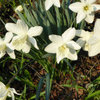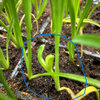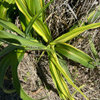It's back and I am ill!!
arcy_gw
10 years ago
Related Stories

DECORATING GUIDESI'll Have the Same: How to Design With Monochromatic Color
Indulge the eye, offer a break from visual chaos and make decorating easier with single-color rooms in any shade you like
Full Story
PRODUCT PICKSGuest Picks: I'll Have a Blue Christmas
With 20 decorations in shades of aqua, teal and turquoise, the holiday will be anything but glum
Full Story
'Pan Am' Inspires Flight Back to 1960s Design
15 updated '60s homes offer lessons in craft, simplicity and style
Full Story
FUN HOUZZEverything I Need to Know About Decorating I Learned from Downton Abbey
Mind your manors with these 10 decorating tips from the PBS series, returning on January 5
Full Story
I. DIE. The Rachel Zoe Project Is Back
As Season 4 premiers we visit some fashion-forward rooms this tastemaker would appreciate
Full Story
KITCHEN DESIGNDesign an Easy-Clean Kitchen
"You cook and I'll clean" might no longer be a fair trade with these ideas for low-maintenance kitchen countertops, cabinets and floors
Full Story
BACKYARD IDEAS7 Backyard Sheds Built With Love
The Hardworking Home: Says one homeowner and shed builder, ‘I am amazed at the peace and joy I feel when working in my garden shed’
Full StorySponsored
More Discussions












FarawayFarmer
FarawayFarmer
Related Professionals
Simpsonville Landscape Architects & Landscape Designers · Tempe Landscape Architects & Landscape Designers · Accokeek Landscape Architects & Landscape Designers · Saint Matthews Landscape Architects & Landscape Designers · Midland Landscape Contractors · Palos Verdes Estates Landscape Contractors · Santa Maria Landscape Contractors · Suitland Landscape Contractors · White Bear Lake Landscape Contractors · Antioch Landscape Contractors · Suisun City Landscape Contractors · Banning General Contractors · Jericho General Contractors · Los Lunas General Contractors · Syosset General Contractorsarcy_gwOriginal Author
silverkelt
flowergirl70ks
Nancy Barginear
arcy_gwOriginal Author
arcy_gwOriginal Author
FarawayFarmer
arcy_gwOriginal Author
susieq_2007